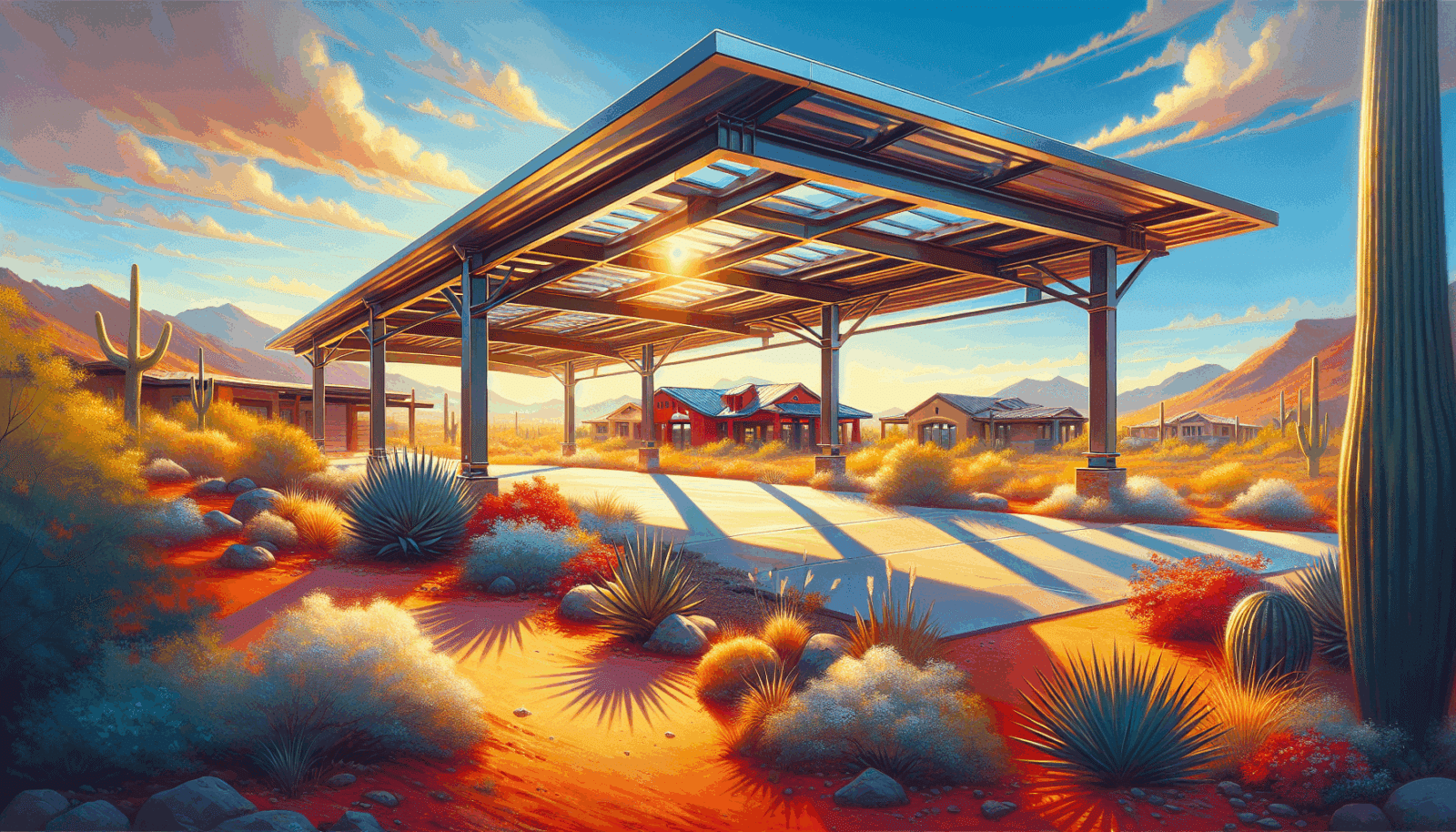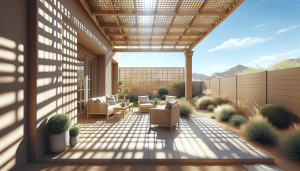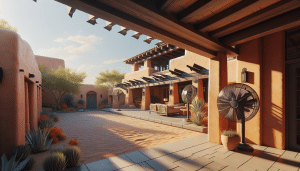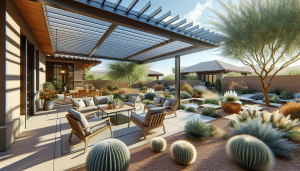Living in Maricopa County means two things: serious sun and sudden storms. Your car spends a lot of hours outside — baking on summer mornings, getting pelted by monsoon-driven grit, or sitting under a sky that just refuses to be boring. A good aluminum carport cover isn’t just a shelter; it’s peace of mind, curb appeal, and fewer surprise repairs. So how do you pick the perfect one? Let’s walk through it like neighbors chatting over a backyard fence.
Why aluminum works well here (and why that’s not totally obvious)
Aluminum resists rust. That matters when dust and occasional humidity meet heat. It’s lightweight, so installation is faster and footings don’t need to be massive. And honestly, it reflects heat better than many dark Materials — so your dashboard won’t feel like a griddle by noon.
But here’s the twist: lighter doesn’t mean flimsy. When engineered and anchored correctly, aluminum frames handle wind loads and monsoon gusts just fine. You’ll hear contractors talk about gauges and load ratings — that’s the technical stuff — but what you’ll care about is whether your car stays protected and your installation lasts.
Size and style: make it fit your home (and your life)
Think of a carport like a hat for your house — it should match the outfit. Measure your driveway and think about how you use the space. Single-vehicle, tandem, or double? Do you want it attached to the garage wall, or freestanding so you can park off to the side?
Style matters. A modern header and slim posts complement a contemporary stucco home. A broader beam with a slightly arched roof might look right on a ranch-style house. Color choices — usually powder-coated finishes — should complement your trim, not fight it. You don’t want a neon clash every time you pull in.
Pro tip: think past the car. A wider cover can double as shaded hangout space for summer evenings — great for kids, a grill, or a workbench. It’s multifunctional. You may not need that now, but you might love it later.
Roof types — what actually performs well in Arizona
There are a few popular roof setups: corrugated aluminum panels, flat-pan systems, and insulated panels. Each has pros and cons.
- Corrugated panels: common, affordable, and easy to replace. They vent heat fairly well but can be noisy in heavy rain.
- Flat-pan or standing seam aluminum: sleeker, quieter, and better at shedding water. Installation is a bit more precise.
- Insulated panels: more expensive up front, but they reduce heat transmission and noise — like adding sunglasses and earplugs to your carport.
One mild contradiction: you want shade, yet you don’t want a sauna underneath. That’s why ventilation, roof angle, and optional insulation matter. A reflective powder coat helps, and so does spacing for air flow. If you’re near a tree-lined street, consider leaf guards; if you’re in a windy corridor, ask for additional bracing.
Permits, HOAs, and who does the work
Here’s the thing — Maricopa County and cities like Phoenix, Mesa, and Chandler have specific building permits and codes for carports. Your HOA may have design rules too. You might think skipping a permit saves time; it usually doesn’t. Inspections protect you from future headaches and keep resale clean.
Work with installers who know local codes. Arizona Pergola Company, for example, has experience navigating county requirements and local inspectors. A seasoned installer will pull permits, provide engineered drawings if needed, and coordinate inspections — which means less paperwork for you and fewer surprises.
Budgeting, warranties, and value over time
Prices vary: a basic single-car aluminum cover starts lower; custom sizes, insulation, and decorative finishes raise the tab. You might find cheaper materials online and think you saved money. You know what? Sometimes you did—until wind bends a post or seals fail and you’re paying for repairs.
Look at warranties: manufacturer paint warranties, structural guarantees, and installer warranties. Powder coat finishes from reputable suppliers (think Sherwin-Williams powder coats) resist fading and chalking better than lower-end paints.
Think long-term: a slightly pricier system installed correctly often outlasts a bargain setup by years. That’s fewer repairs, better appearance, and a higher resale appeal.
Installation and upkeep — less fuss than you’d expect
Installations usually take a day or two for a standard carport. Site prep includes leveling, trenching for footings, and pouring concrete pads or anchors. If you’re considering DIY, remember that aluminum is forgiving but precision matters: anchor spacing and fastener torque make a difference when a summer gust hits.
Maintenance is low: rinse with a hose, wipe down any bird droppings, and check bolts yearly. A soft brush with mild soap keeps the finish nice. Don’t ignore squeaks or loose fasteners; a small fix today prevents a big problem later.
Let’s wrap this up — the short version
Aluminum is smart for Maricopa County: it combats rust, handles sun well, and can be stylish. Match size and style to your home; choose a roof type that balances shade and heat control; get permits and a pro who knows local codes; and consider warranties as part of the purchase price. Little choices now save headaches later — trust me on that.
Ready to protect your ride?
If you want a quick chat or a site visit, call Arizona Pergola Company at 480-568-5870 or Request a Free Quote. We’ll walk your property, answer questions, and show you options that look great and hold up. Give us a ring — you’ll be glad you did.




